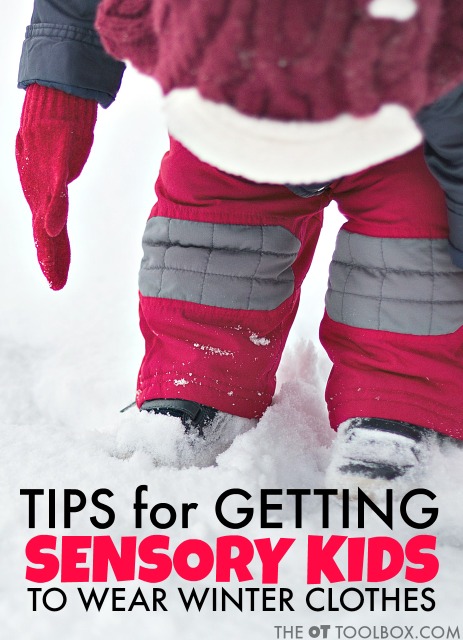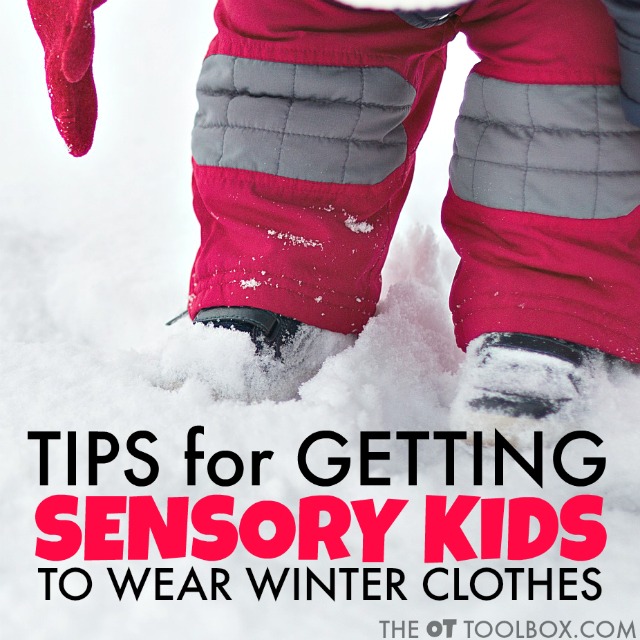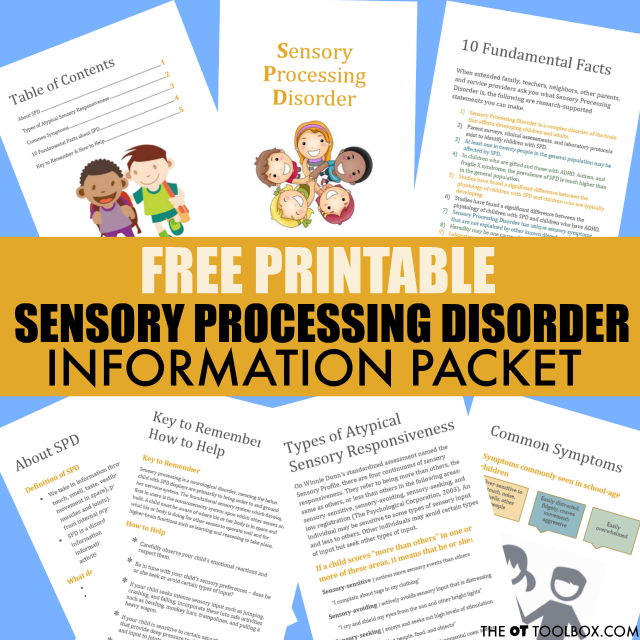You’ve probably seen the kids that wear shorts all winter long. Or those that go out into 20 degree weather with only a hoodie to keep them warm. What gives? In this article, we’re talking about sensory friendly winter clothing and tips for getting sensory kids to wear winter clothing. I know I can not stand the thought of wearing an itchy scarf or (shudder) a turtle neck during the frigid winter months. So how can we support kids during cold weather when sensory needs impact their ability to even stand to put on boots, pants, a hat, winter coats, or gloves? Let’s go over this…
Sensory Winter Clothes
Before we get to the tips for helping kids with sensory needs to not freeze out there in the cold temps, lets cover a few resources that will support your needs in this topic…
- Clothing sensitivity red flags
- Sensory friendly clothing
- Clothing fasteners and sensory needs
- Weighted vests and compression garments
These resources will help many individuals who just can’t stand the thought of wearing winter clothes!
Below, you will find information on the tactile sensory system and how tactile challenges to the sensory system can result in difficulties tolerating clothing textures. The strategies below are helpful tips for getting sensory kids to wear winter clothes. You may want to use these strategies along with our fun winter clothes worksheet to pull the theme together.

Tips for Getting Sensory Kids to Wear Winter Clothes
The information received from the tactile system includes light touch, pain, temperature, and pressure. When the tactile system is immature or impaired, the brain can become overly stimulated with resulting poor organization and regulation of input. Children can then experience difficulty with behavior and concentration as a result.
Winter Clothing Sensory Strategies
- An Under Armour shirt (this one has a crew neck to reduce a tight feeling around the neck.)
- Swim Shirt (fit in a smaller size)
2. Utilize seamless undergarments (for girls or boys), clothing or seamless socks, or clothing with flat seams. These can be added under a layer of heavier socks or used in isolation.
3. Tighten or loosen shoe laces as preferred. A tighter shoe lace can provide compression through the feet.
4. Becoming overheated can be a big cause for a sensory meltdown or refusal to wear winter coats. Consider trying a fleece or lined sweatshirt instead of a puffy winter coat.


Colleen Beck, OTR/L has been an occupational therapist since 2000, working in school-based, hand therapy, outpatient peds, EI, and SNF. Colleen created The OT Toolbox to inspire therapists, teachers, and parents with easy and fun tools to help children thrive. Read her story about going from an OT making $3/hour (after paying for kids’ childcare) to a full-time OT resource creator for millions of readers. Want to collaborate? Send an email to contact@theottoolbox.com.



